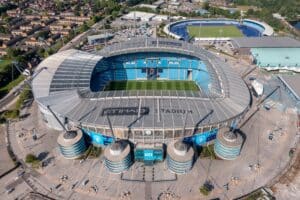
The ongoing worldwide pandemic has seen the A-League, as well as all state competitions postpone their fixtures until further notice.
The current situation is bleak, with no timeframe set for when on-field competition can restart or whether the current season will be cancelled in favour of a fresh start next season.
The FFA has a lot on their plates right now and no-one would envy them right now. However, if they’re not careful enough, they could potentially set Australian soccer back several seasons.
The COVID-19 pandemic will end, but things won’t normalise for a long time. The health and safety of Australians is of the utmost priority and thankfully, the country hasn’t been as seriously affected as some.
In saying that, several aspects of the game in our country cannot be sacrificed and must not be put on the backburner.
The National Second Division was easily the most necessary adjustment to the elite level of our sport prior to the COVID-19 pandemic.
Obviously, these bizarre times have altered this. But when the dust settles, and it will, the FFA needs to act upon the National Second Division.
When life-changing events take place, it becomes second nature to drop whatever you’re doing and focus solely on the important matter at hand.
After a while, it becomes easy to forget on what you were originally focused on. Sometimes, it gets left in the rear-view mirror altogether and you never do a U-turn to find it.
The FFA cannot do this to their current plans on the National Second Division.
At the time of writing, no ‘set in stone’ plans currently exist for the FFA and the National Second Division. Nothing concrete has been put to paper.
On the flipside, it is known there are strong motivations to get the ball rolling as quickly as possible. Like a cheese wheel going down a hill.
Weird analogy, but the point remains. The FFA is acutely aware of how important the National Second Division is to the future of the A-League and the sport in Australia, as a whole.
It goes without saying what makes the European leagues so cutthroat and enviable to Australians.
The promotion and relegation, the seemingly endless divisions in countries like England, Germany and Spain. The possibility of playing against some of the best in the world, both domestically and in continental tournaments. The knowledge that if you’re not up to scratch, you can be out the door as quick as the snap of a finger.
Or as quick as a cheese wheel going down a hill. How’s that come up again?
There isn’t as much accountability for poor performance in Australian soccer. If you finish bottom in the A-League, there’s no real punishment. Some seasons can be a real lottery.
The point of all this? To ensure the FFA doesn’t allow COVID-19 to halt their plans on the National Second Division.
They can be excused for ignoring other issues right now, some just simply aren’t essential. But the future of Australian soccer is one of the most essential issues for them.
Let’s say for arguments sake that the FFA planned to introduce the National Second Division at the start of the 2022-23 A-League season.
Let’s also say that the COVID-19 pandemic happened in another universe, allowing them a near uninterrupted 18-24 months to figure out a setup for the National Second Division.
With their current motives to get the National Second Division started, it’s more than plausible that it could become a reality in that timeframe.
However, we live in the universe where COVID-19 has wreaked havoc upon the world and these plans have been temporarily put to the side.
It’s foreseeable that the FFA will allow things to completely settle before they resume planning on the National Second Division.
That is easily one of the biggest mistake they could make at that time, when it comes.
They can’t afford to delay any longer. If they push plans back to 2024-25 or even longer down the line, the game in this country will suffer even more.
We can’t imagine having to make these tough decisions during this time such as cutting or furloughing staff amongst other things.
But if they make the decision to delay the National Second Division plans, they’ll regret it sooner than they think.
We’re hopeful this is not the case.
If you enjoyed this article and want to see more like it, subscribe to our weekly newsletter for more just like it.
Also, get involved in the conversation on Twitter @Soccersceneau



























